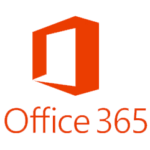#offboarding #terminations #automation #technology #tech #cybersecurity #cloudsecurity #management #cloud #zerotrust #IGA #IAM #accessmanagement #goodservice
User access lifecycle management is a multifaceted puzzle that organizations must solve to ensure security, compliance, and operational efficiency. From offboarding and terminations to disabling User access in legacy applications,, organizations face numerous challenges in effectively deactivating Users and closing security gaps. Fortunately, leveraging the capabilities of an end-to-end automated life cycle management system provides a revolutionary approach to address these obstacles effectively.
Offboarding Challenges and Automation
Offboarding is a critical process that manages User identities when they leave an organization, whether due to resignation, retirement, or other reasons. It involves promptly revoking access privileges and deactivating accounts to eliminate security risks and ensure departing employees can no longer access organizational systems, applications, and data. Offboarding focuses on securing sensitive information, mitigating risks, and maintaining compliance by effectively revoking access to all applications and resources the User had while in the organization.
Offboarding employees presents several inherent challenges, outlined below:
1. Lack of knowledge of termination: Often the termination or offboarding of the User by a Department Manager or Division is unknown to those who need to take the action to revoke or disable access. Though this has become somewhat easier with centralized identity stores and access certification mechanisms, it continues to be a challenge in several large organizations.
2. Lack of knowledge or information on which resources the off-boarded /terminated User has access to. Whether it is a external Contractor or regular employee, they may have had their own life in the organization working for different departments or divisions over different time periods. Hence no one may have or know where there may be a holistic view or comprehensive list of all resources to which this individual has access privileges.
3. Despite the best of information one may have addressing challenges 1 and 2 above, timely action to revoke known access may be delayed due to delayed notification of termination and other priorities coming in the way for the over-stretched access management teams.
4. Users with privileged access pose a higher risk in this context since extended access beyond date of termination could be misused by insiders or Users themselves.
5. Many organizations want to end the relationship and smoothly terminate the User and not delay their exit for any more period than absolutely needed. Hence there is a rush or sense of urgency to let the User go which further reduces the time to properly assess and overcome the above challenges which in itself is another challenge.
All the above challenges, unless addressed, tend to increase the likelihood of unauthorized access, data breaches and regulatory compliance violations. Manual efforts are time-consuming and prone to errors. Properly addressing these challenges is crucial for maintaining security, protecting sensitive information, and ensuring compliance throughout offboarding. Automation provides a proactive approach to offboarding, promptly identifying and deactivating User accounts to minimize the vulnerability window and mitigate the risk of unauthorized access.
Streamlining Terminations with Automation
Terminations are a subset of the offboarding process that focuses on the administrative tasks involved in ending the employment relationship. In the context of Identity Governance and Administration (IGA), terminations involve:
· Identifying which resources, a User has access to
· Revoking physical access privileges and logical access privileges to the network, VPN and
VDIs
· Disabling User access to applications, databases etc.
· Disabling User access to security tokens
Automation simplifies terminations by enabling immediate revocation of known access privileges and disabling User accounts upon termination. Role-based access control (RBAC) frameworks align permissions with job roles, reducing the risk of lingering permissions and access vulnerabilities. Automated workflow processes and notifications facilitate a coordinated effort between departments, ensuring a consistent and accurate termination process. Proactive discovery of identities and access privileges across the enterprise allows for full digital knowledge of every User, which in turns comes in handy at the time of offboarding and termination to complete a thorough revocation of access to all relevant resources in the order of priority (VPN and network first, apps next etc).
Overcoming Legacy Application Integration Hurdles
The existence of legacy systems and applications in an organization can pose unique challenges to off-boarding Users in the context of Identity Governance and Administration (IGA). When off-boarding Users, the goal is to ensure that access to all systems and applications is appropriately revoked or modified to prevent unauthorized access.
The challenges related to legacy systems and applications during off-boarding can include:
· Lack of Centralized Control: Legacy systems often have their own authentication and access management mechanisms, which might not be integrated into a centralized IGA solution. This means that administrators might have to manually access each legacy system to revoke access for a departing User, making the off-boarding process more time-consuming and error-prone.
· Limited Documentation: Older systems might have outdated or incomplete documentation, making it difficult for administrators to identify all the access points and connections a User had within these systems. This lack of visibility can lead to overlooking access rights, potentially leaving security vulnerabilities during the off-boarding process.
· Compliance Risks: Failure to revoke access to all systems and applications for a departing User can lead to compliance issues, particularly if sensitive data is still accessible by someone who should no longer have permission to view or modify it.
· Compatibility Issues: Legacy systems may not be compatible with modern IGA solutions or support standard protocols for User provisioning and deprovisioning. This might require custom integrations or manual workarounds, adding complexity and potential points of failure during the off-boarding process.
· Skill Gap: Managing legacy systems might require specialized knowledge or skills that newer IT staff may not possess, leading to difficulties in efficiently off-boarding Users who had access to these systems.
· Limited Audit Trail: Legacy systems might not maintain detailed audit logs, making it harder to track User activity and identify potential security breaches or unauthorized access after the off-boarding process.
To address these challenges, organizations with legacy systems may need to consider the following steps:
1. Develop and maintain comprehensive documentation of legacy systems and their access control mechanisms.
2. Invest in integration efforts to link legacy systems with the central IGA solution to streamline the off-boarding process.
3. Implement strong access control policies and periodic access reviews to ensure access rights are accurate and up to date.
4. Provide specialized training to IT staff who handle legacy systems to ensure they can effectively manage User access during off-boarding.
Legacy systems and applications create unique challenges during offboarding due to their lack of integration with modern identity management tools, limited documentation, and potential compliance risks, making it harder to revoke User access efficiently and securely. By assessing their current state and adopting an end-to-end life cycle management system like BAAR-IGA, organizations can optimize their offboarding and termination practices. BAAR-IGA empowers organizations with the tools they need to ensure effective offboarding, maintain robust security measures, and meet strict regulatory requirements.
Enhancing Compliance and Audit Capabilities
Compliance and audit considerations are paramount in the modern business landscape. Manual processes make it challenging to demonstrate compliance with regulatory requirements and can lead to audit failures. Automation simplifies compliance efforts by generating comprehensive documentation and audit trails, capturing key events and actions taken during the offboarding and termination processes. This documentation facilitates auditing procedures and provides a clear record of access removal for terminated employees, ensuring accountability and compliance.
Conclusion
User access life cycle management is a crucial aspect of maintaining security, compliance, and efficiency in organizations. Offboarding employees, when they leave the company, is a complex process that involves revoking access and deactivating accounts to protect sensitive information and ensure compliance. However, there are challenges like lack of knowledge about User termination, uncertainty regarding the resources they accessed, delayed notifications, and the urgency to terminate smoothly. These challenges can lead to unauthorized access and data breaches. To overcome these issues, automation and the right tools play a key role. Automation not only speeds up the process but also reduces costs, mitigates risks, and improves compliance posture. Organizations must assess their current state and create a roadmap to establish effective offboarding as a capability. Implementing automation and addressing challenges will enhance security, protect data, and ensure compliance during the offboarding process.
Additionally, terminations, a subset of offboarding, involve administrative tasks like revoking access privileges and disabling User accounts. Automation simplifies terminations by immediately revoking access and aligning permissions with job roles to minimize access vulnerabilities. Legacy applications can pose hurdles during offboarding due to decentralized control, limited documentation, compliance risks, and compatibility issues. To address these, comprehensive documentation, integration efforts, access control policies, and specialized training are essential. Automation streamlines compliance efforts by generating documentation and audit trails, ensuring accountability and compliance. By leveraging automation and overcoming challenges, organizations can ensure effective offboarding, maintain security, and meet regulatory requirements.
In conclusion, embracing the revolutionary capabilities of an end-to-end life cycle management system like BAAR-IGA has a transformative impact on offboarding and termination processes. By efficiently addressing the challenges outlined above, BAAR-IGA streamlines the offboarding journey, ensuring prompt revocation of access privileges and deactivation of User accounts upon termination. Its centralized identity store and access certification mechanisms eliminate the lack of knowledge of termination, while its proactive discovery of User identities and access privileges resolves the issue of uncertainty regarding User resources. BAAR-IGA’s automation capabilities enable timely action, mitigating delays caused by notifications and other priorities, thus reducing the risk of unauthorized access and data breaches. Moreover, it effectively manages Users with privileged access, minimizing insider threats. Additionally, BAAR-IGA’s compatibility with legacy systems and applications allows for seamless integration, overcoming the hurdles of decentralized control and limited documentation. By generating comprehensive documentation and audit trails, BAAR-IGA ensures compliance with regulatory requirements, providing organizations with a clear record of access removal for terminated employees. With its User-friendly interface and cost-effectiveness, BAAR-IGA delivers a holistic solution that maximizes security, compliance, and operational efficiency throughout the offboarding and deprovisioning processes.













